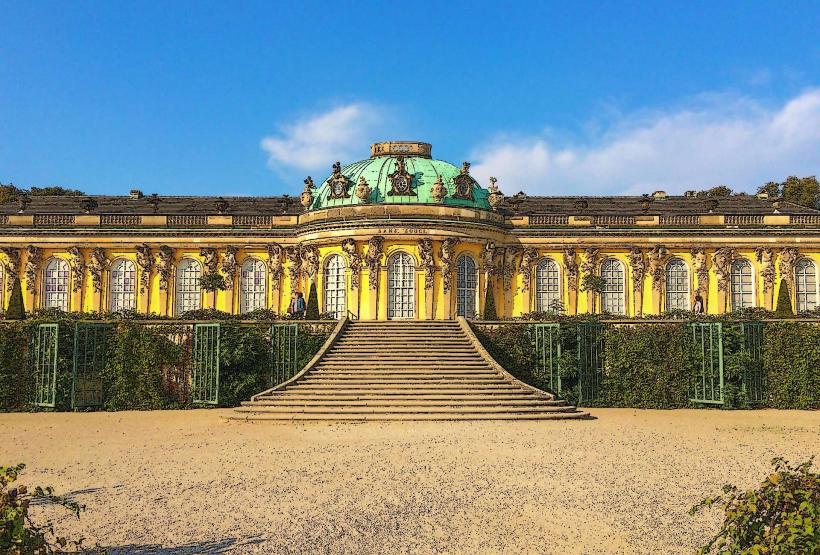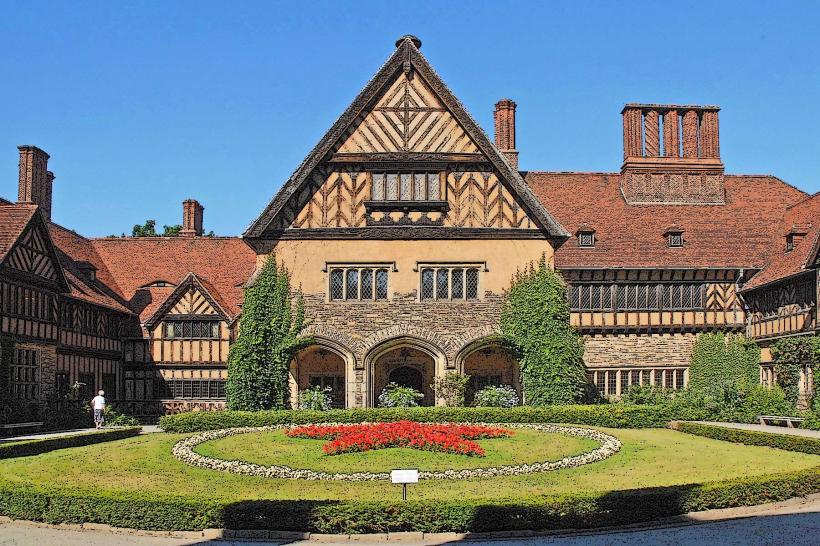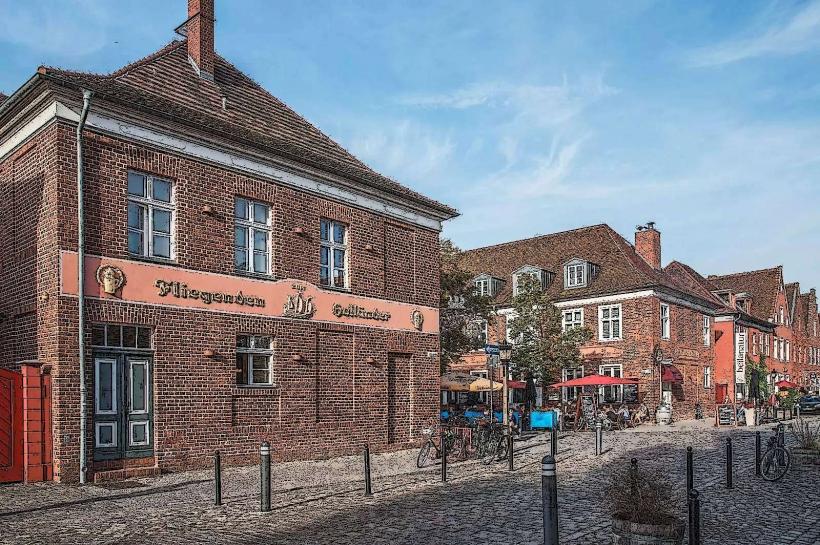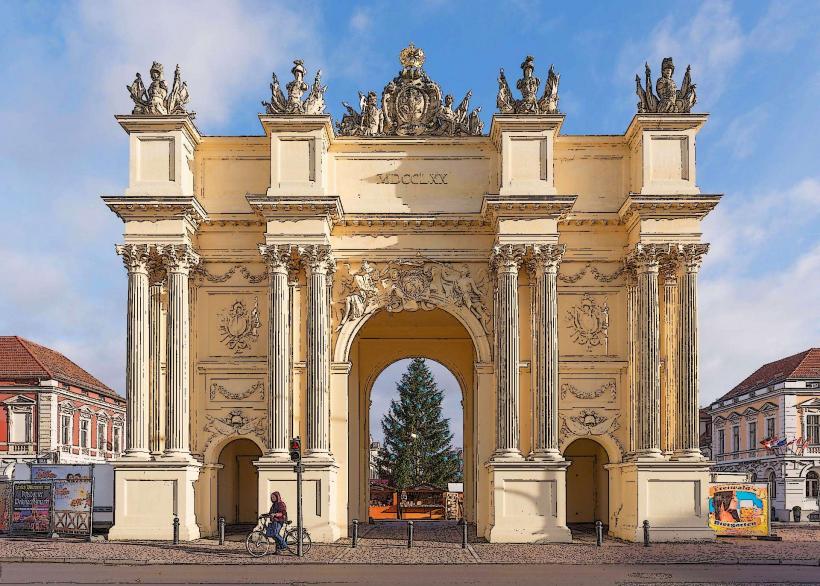Information
City: PotsdamCountry: Germany
Continent: Europe
Potsdam is the capital city of the state of Brandenburg, located just outside of Berlin, Germany. Known for its rich history, royal heritage, and beautiful parks and palaces, Potsdam offers a unique blend of architectural grandeur, cultural landmarks, and stunning natural landscapes. The city’s proximity to Berlin has made it a key center of politics, art, and culture throughout the centuries.
1. Historical Background
- Early History: Potsdam has a history dating back to at least the 10th century, when it was a small settlement under the rule of the Slavs. Over the centuries, it grew in significance and became a royal residence, particularly in the 17th century when it was chosen by the Electors of Brandenburg as a place of leisure and power.
- Royal Heritage: Potsdam became the seat of the Prussian royal court under Frederick the Great (Frederick II) in the 18th century. The city's role as a royal center was further established when King Frederick II built the Sanssouci Palace and its extensive gardens, making Potsdam a symbol of Prussian prestige and power.
- Post-World War II: After World War II, Potsdam became part of the Soviet-controlled sector of Germany, and its strategic importance grew. It is also the site of the Potsdam Conference in 1945, where the victorious Allied leaders (Stalin, Churchill, and Truman) met to discuss the post-war order.
2. Key Landmarks and Monuments
- Sanssouci Palace: The Sanssouci Palace is undoubtedly the most famous landmark in Potsdam and one of the most iconic Baroque buildings in Germany. Built by Frederick the Great in the mid-18th century, the palace served as his summer residence. The palace is renowned for its beautiful Rococo interior and expansive gardens, which are considered some of the finest in Europe. The name "Sanssouci" translates to "without worries," reflecting Frederick’s desire for a place of relaxation away from courtly affairs.
- Potsdam Palace (Neues Palais): The Neues Palais (New Palace) is another stunning royal palace located on the western edge of Sanssouci Park. Built by Frederick the Great in the 18th century, this grand palace was intended to demonstrate Prussia's power and prestige after the Seven Years' War. The palace’s lavish interiors, including the Great Hall, are open to visitors and showcase the opulence of the Prussian monarchy.
- Cecilienhof Palace: The Cecilienhof Palace, located on the shores of Nauen Lake, is a significant historical site because it was the venue for the Potsdam Conference in 1945, where Allied leaders set the framework for post-war Europe. The palace itself is an impressive example of English Tudor-style architecture and now houses a museum dedicated to the conference and the post-war period.
- Glienicke Bridge: The Glienicke Bridge is another iconic structure in Potsdam, famously known as the "Bridge of Spies." During the Cold War, it was used for the exchange of spies between East and West Germany. The bridge connects Potsdam with the neighboring town of Wannsee, and today it stands as a symbol of the Cold War division in Europe.
3. Sanssouci Park and Gardens
- Sanssouci Park: The Sanssouci Park is an extensive and beautifully landscaped park that surrounds the Sanssouci Palace. Designed by Frederick the Great’s architect Georg Wenzeslaus von Knobelsdorff, the park features stunning terraces, fountains, and sculptures, with vineyards and cypress trees adding to its charm. Visitors can explore a variety of gardens, each with a distinct style, including French, English, and Italian influences.
- Orangery Palace: The Orangery Palace is located within the Sanssouci Park and is home to a collection of art and sculptures. It also has a beautiful garden, and the palace itself is designed in a Renaissance Revival style. It was used for growing citrus trees in the winter and served as a venue for royal events.
- Potsdam’s Other Parks: Besides Sanssouci Park, Potsdam is home to several other green spaces, including the Park Babelsberg, a large landscape park with views over the Havel River, and the New Garden, which features the Marmorpalais (Marble Palace) and the Chinesisches Haus (Chinese House), a pagoda-style building built in the 18th century.
4. Museums and Cultural Institutions
- The Potsdam Museum: This museum showcases the city's history, from its medieval roots through its royal past and modern development. It includes exhibits on the city's architecture, art, and the famous events that took place in Potsdam, including the Potsdam Conference and the city’s role in the Cold War.
- Museum Barberini: The Museum Barberini is an art museum housed in a reconstructed Baroque building that was once the residence of a wealthy merchant family. The museum focuses on both classical and contemporary art, with an extensive collection of works by famous artists such as Impressionist painters like Monet and Van Gogh.
- Film Museum Potsdam: Potsdam has a deep connection with the film industry, primarily through the Babelsberg Film Studios, which are the oldest large-scale film studios in the world. The Film Museum Potsdam offers exhibitions on the history of cinema and the role that the city has played in the development of the German film industry, from silent films to modern productions.
5. Cultural Events and Festivals
- Potsdam Summer Festival: The Potsdam Summer Festival is one of the city’s major cultural events, featuring outdoor concerts, theater performances, and other cultural activities. The festival takes place in various locations, including the Sanssouci Park and New Garden, and attracts both locals and tourists.
- Potsdam Wintermärchen (Winter Fairy Tale): During the holiday season, Potsdam hosts its famous Winter Märchen (Winter Fairy Tale), a Christmas market held in the historic city center. The market features festive lights, holiday stalls selling handcrafted goods, and plenty of food and drinks to keep visitors warm during the winter months.
- International Film Festival Potsdam: The city also hosts the Potsdam International Film Festival, which showcases both established filmmakers and emerging talent, focusing on international cinema. The festival promotes cross-cultural dialogue and is an important event for film enthusiasts.
6. Modern Potsdam
- Science and Education: Potsdam is a hub for research and education, with several universities and research institutes, including the University of Potsdam, which is known for its focus on social sciences, natural sciences, and environmental studies. The city is also home to several research centers in the fields of physics, geosciences, and life sciences.
- Technology and Innovation: In recent years, Potsdam has become increasingly involved in the high-tech and digital sectors, with a growing number of start-ups and tech companies based in the city. The proximity to Berlin’s tech scene has contributed to Potsdam's rise as a technology and innovation hub.
7. Transportation and Accessibility
- Train: Potsdam is well-connected to Berlin via the S-Bahn (suburban train) system, with direct trains linking the two cities in about 30 minutes. The city is also connected to other German cities via regional and long-distance trains.
- Bicycle-Friendly: Potsdam is a bicycle-friendly city, with many cycling paths and routes through its parks and around the lakes and rivers. The city is popular for cycling tours, especially around the beautiful landscapes and historical sites.
- Berlin Airports: Given its proximity to Berlin, Potsdam is easily accessible from the two airports in Berlin, Berlin Brandenburg Airport (BER) and Berlin Tegel, providing international and domestic connections.
8. Shopping and Dining
- Brandenburger Strasse: The city’s main shopping street, Brandenburger Strasse, is lined with shops, cafes, and restaurants, offering a mix of local boutiques and international brands. Visitors can enjoy a leisurely stroll along the pedestrianized street and shop for fashion, souvenirs, and unique goods.
- Local Cuisine: Potsdam's culinary scene is influenced by both traditional Brandenburg cuisine and international flavors. Local specialties include Brandenburgische Torte (a cake with butter and fruit) and Schweinebraten (roast pork). There are also many options for international food, from Mediterranean to Asian cuisine.
- Cafes and Beer Gardens: Potsdam is home to many cafes, especially around the Alter Markt and Nauener Tor, where visitors can enjoy coffee, cake, and light meals while taking in the city’s historical ambiance. The city also features beer gardens where visitors can relax and sample local beers.
Conclusion
Potsdam is a city that offers a unique blend of royal history, cultural heritage, and modern-day attractions. With its palaces, parks, and museums, along with its proximity to Berlin, it is a must-visit destination for anyone interested in Prussian history, architecture, and natural beauty. Whether you’re exploring Sanssouci Palace, enjoying a summer festival, or cycling through its beautiful parks, Potsdam provides a rich and varied experience that will appeal to a wide range of interests.





